Balcony Gardening for Beginners: Your Step-by-Step Urban Garden Guide
Master balcony gardening with this complete urban gardening guide. Learn container gardening basics, discover the best plants for balconies, and create a productive small space garden—perfect for apartment dwellers starting their first balcony garden.
Balcony Bloomers
8/3/20257 min read
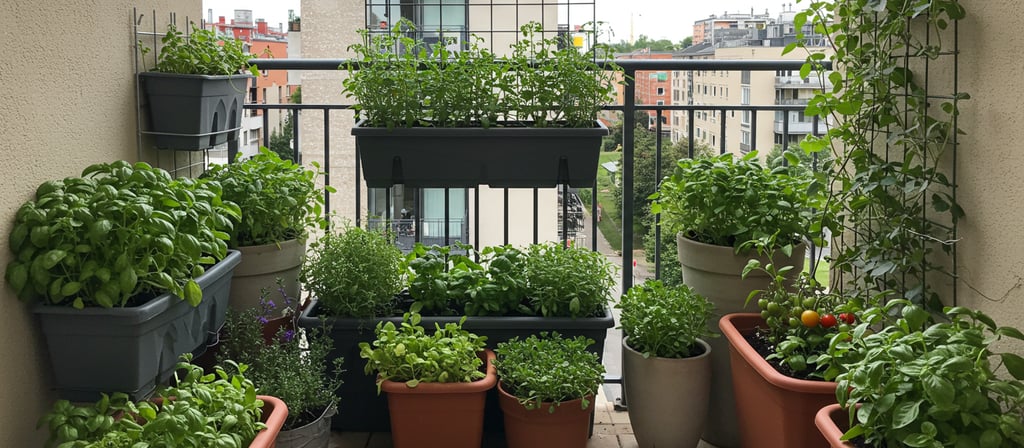

Starting a balcony garden feels overwhelming when you're staring at an empty concrete space, wondering how to transform it into a green sanctuary. Whether you're new to urban gardening or transitioning from traditional gardening to small space gardening, this comprehensive guide will walk you through every step of creating your first container gardening setup.
Understanding Balcony Gardening Basics
Balcony gardening is the practice of growing plants in containers on balconies, terraces, or other small outdoor spaces. Unlike traditional ground gardening, this form of urban gardening requires understanding unique challenges like weight restrictions, wind exposure, and limited root space.
The beauty of small space gardening lies in its accessibility—you don't need a yard to grow fresh herbs, vegetables, or beautiful flowers. Container gardening allows complete control over soil quality, plant placement, and growing conditions, making it perfect for gardening for beginners apartment dwellers.
Step 1: Assess Your Balcony's Growing Conditions
Before selecting balcony plants, spend time understanding your space's unique microclimate. Track sunlight patterns throughout the day, noting which areas receive full sun (6+ hours), partial sun (4-6 hours), or shade (less than 4 hours).
Consider wind exposure, as elevated spaces often experience stronger breezes that can quickly dry out plants. Check your balcony's weight capacity with building management—soil and water add significant weight that must be factored into your balcony garden layout ideas.
Measure your available space, including floor area, wall space for vertical gardening systems, and overhead clearance for hanging plants. These measurements will guide your container selection and plant placement strategies.
Step 2: Choose the Right Containers for Your Space
Successful container gardening starts with proper containers. Avoid decorative pots without drainage holes—waterlogged roots spell disaster for even the hardiest plants. Instead, invest in containers that balance functionality with aesthetics.
For lightweight pots for balconies, consider fiberglass, resin, or high-quality plastic containers that won't crack in temperature extremes. These materials are significantly lighter than ceramic or concrete while still providing adequate insulation for roots.
Size matters tremendously in container selection. Herbs thrive in 6-8 inch pots, leafy greens need 8-12 inches, while tomatoes and other large vegetables require containers holding at least 20 gallons of soil. Self-watering planters for small spaces are invaluable for busy urban dwellers, maintaining consistent moisture levels without daily attention.
Step 3: Select the Best Soil for Container Gardening
Regular garden soil is too heavy and doesn't drain well in containers. Instead, choose high-quality potting mix specifically formulated for container gardening. These blends are lighter, drain better, and often include slow-release fertilizers.
For organic balcony gardening, look for OMRI-certified organic potting mixes. You can also create your own blend using equal parts peat moss or coconut coir, perlite, and compost. This combination provides excellent drainage while retaining enough moisture for healthy root development.
Avoid soil from your yard or cheap "topsoil" from hardware stores. These products become waterlogged in containers and can introduce pests or diseases to your balcony garden.
Step 4: Select the Best Plants for Balconies
When choosing plants, match them to your specific light conditions and experience level. For gardening tips for apartments, start with low-maintenance balcony plants that forgive beginner mistakes.
Best Plants for Full Sun Balconies:
Herbs: basil, rosemary, thyme, oregano
Vegetables: tomatoes, peppers, eggplant, beans
Flowers: marigolds, petunias, zinnias, sunflowers
Best Plants for Partial Sun/Shade:
Leafy greens: lettuce, spinach, kale, Swiss chard
Herbs: parsley, chives, mint, cilantro
Flowers: impatiens, begonias, coleus, ferns
To grow vegetables on a balcony successfully, choose compact or dwarf varieties bred specifically for containers. 'Patio' tomatoes, 'Spacemaster' cucumbers, and 'Paris Market' carrots produce full-sized harvests in small spaces.
For a herb garden on a balcony, start with frequently used culinary herbs. Basil, parsley, cilantro, and chives provide immediate cooking benefits while being nearly impossible to kill.
Step 5: Plan Your Balcony Garden Layout
Effective balcony garden layout ideas maximize both growing space and aesthetic appeal. Place taller plants toward the back or sides to avoid shading shorter plants. Group plants with similar water and light needs together for easier maintenance.
Vertical gardening transforms wall space into growing area without using valuable floor space. Install trellises for climbing plants, use tiered plant stands, or hang planters at different heights. This approach is essential for how to garden in small spaces effectively.
Create zones within your balcony: a herb garden near the kitchen door for easy harvesting, flowering plants in highly visible areas for maximum impact, and utility plants like composters or tool storage in less prominent corners.
Step 6: Essential Tools and Equipment
Compact gardening tools designed for small spaces make maintenance easier without cluttering your balcony. A basic toolkit includes:
Hand trowel and pruning shears
Watering can with a long spout or hose attachment
Small rake for soil cultivation
Plant ties and stakes for support
Measuring cup for fertilizer application
Consider a storage bench that doubles as seating and tool storage. Many urban gardeners use rolling carts to organize supplies while maintaining mobility for seasonal rearrangements.
Step 7: Establish a Watering and Feeding Routine
Container plants dry out faster than ground gardens, especially in windy or sunny locations. Check soil moisture daily by inserting your finger two inches deep—water when the top layer feels dry.
Water deeply until it runs from drainage holes, ensuring the entire root zone receives moisture. Shallow, frequent watering creates weak root systems vulnerable to heat stress.
Feed container plants regularly since they can't access ground nutrients. Use balanced, slow-release fertilizer at planting, supplemented with liquid fertilizer every 2-3 weeks during growing season. Organic options include compost tea, fish emulsion, or seaweed extract.
Step 8: Maximize Your Growing Season
Extend your growing season with succession planting and seasonal rotations. Plant lettuce every two weeks for continuous harvests, or replace spent summer annuals with fall-blooming varieties.
In colder climates, bring tender plants indoors or use cold frames and row covers to protect plants from frost. Many herbs can overwinter indoors on sunny windowsills, providing fresh flavors year-round.
Consider investing in a small greenhouse or cold frame for your balcony. These structures extend the growing season significantly and protect plants from harsh weather.
DIY Balcony Garden Projects to Get Started
Simple Self-Watering Planter
Convert any container into a self-watering system using a plastic bottle, string, and basic tools. This DIY balcony garden project ensures consistent moisture for plants during busy periods.
Vertical Herb Garden
A vertical herb garden is a space-saving planter that lets you grow fresh herbs upward on walls or stands—perfect for balconies, patios, or small kitchens.
Trellis System for Climbing Plants
Create an attractive support system for beans, peas, or flowering vines using bamboo poles and garden twine. This vertical growing solution maximizes harvest from minimal space.
Common Beginner Mistakes to Avoid
New urban gardeners often make predictable mistakes that lead to frustration. Over-watering kills more plants than drought—when in doubt, wait another day. Overcrowding containers prevents proper air circulation and increases disease risk.
Starting too large overwhelms beginners. Begin with 5-6 plants, master their care, then expand gradually. Each balcony has unique conditions that require learning through experience.
Ignoring plant spacing recommendations leads to competition for nutrients and light. Follow seed packet or plant tag instructions for proper spacing, even if containers look sparse initially.
Seasonal Maintenance and Care
Spring preparation involves inspecting containers for winter damage, refreshing potting soil, and planning new plantings. Summer requires vigilant watering and regular harvesting to keep plants productive.
Fall cleanup includes composting spent plants, storing containers properly, and planning next year's garden. Winter maintenance focuses on protecting perennial plants and maintaining tools.
Keep a simple garden journal noting what works in your specific conditions. Every balcony creates unique growing conditions that require customized approaches.
Connect With Like-Minded Growers
Connect with other urban gardeners through online forums, local gardening clubs, or community gardens. Sharing experiences, seeds, and advice accelerates learning while building friendships around shared interests.
Many cities offer balcony gardening workshops or master gardener programs specifically focused on container growing techniques. These resources provide valuable local knowledge about plant varieties and growing schedules.
Consider joining seed swaps or plant exchanges to try new varieties without significant investment. Social media groups dedicated to small space gardening offer inspiration and troubleshooting support.
Your Journey into Urban Gardening Begins Today!
Starting balcony gardening from scratch requires patience, observation, and willingness to learn from both successes and failures. Every experienced gardener has killed plants, made mistakes, and learned through trial and error.
The reward comes in that first tomato grown on your balcony, the fresh herbs that transform your cooking, or simply the satisfaction of creating life in an urban environment. With proper planning, appropriate plant selection, and consistent care, your balcony can become a productive, beautiful extension of your living space.
Remember that successful urban gardening is a marathon, not a sprint. Start small, focus on understanding your space's unique conditions, and expand gradually as your confidence and knowledge grow. Your future self will thank you for taking that first step into the rewarding world of balcony gardening.
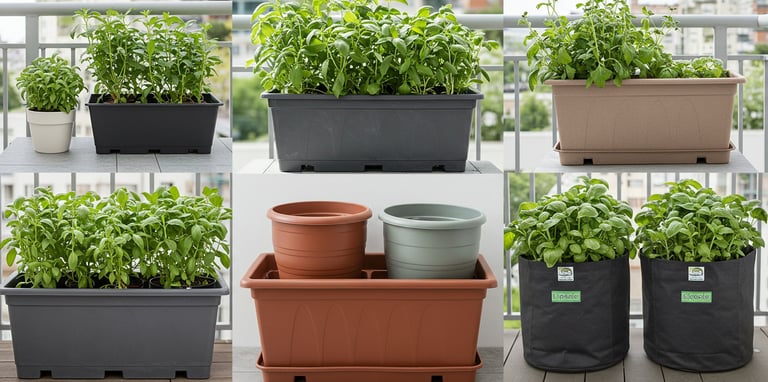

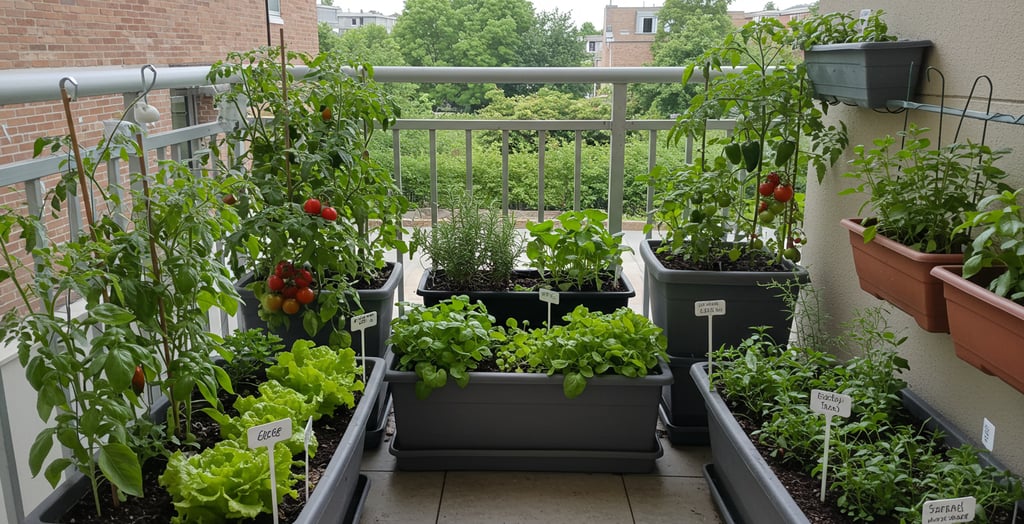

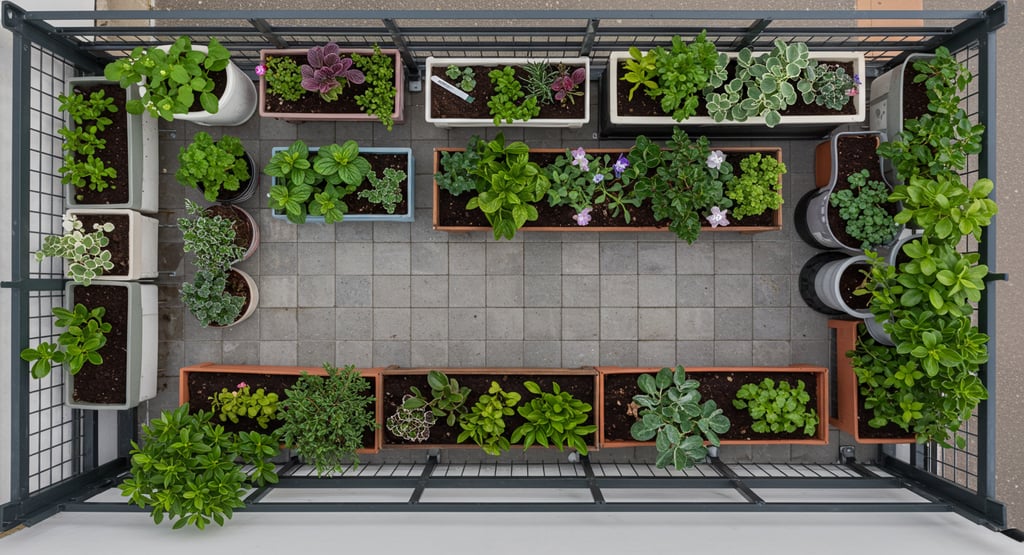

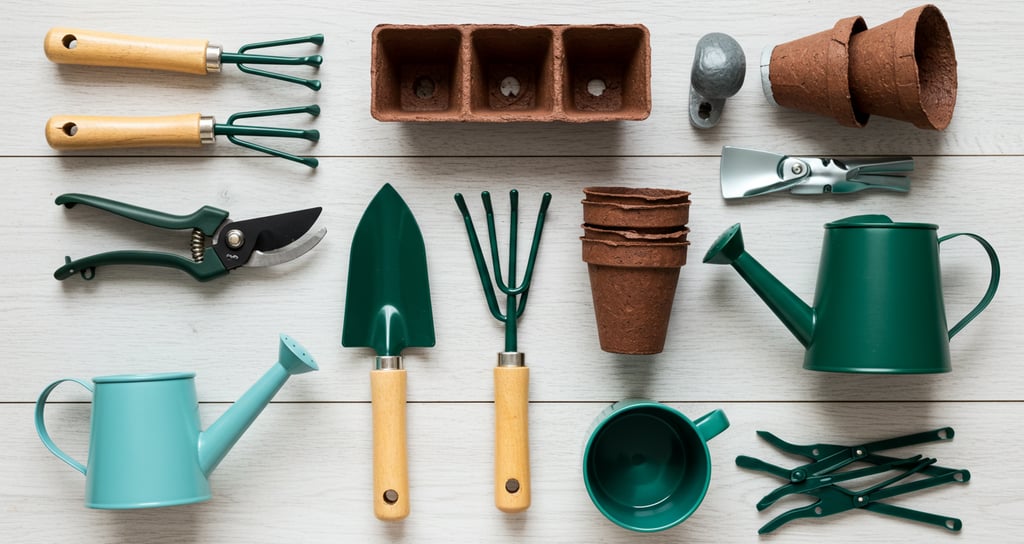

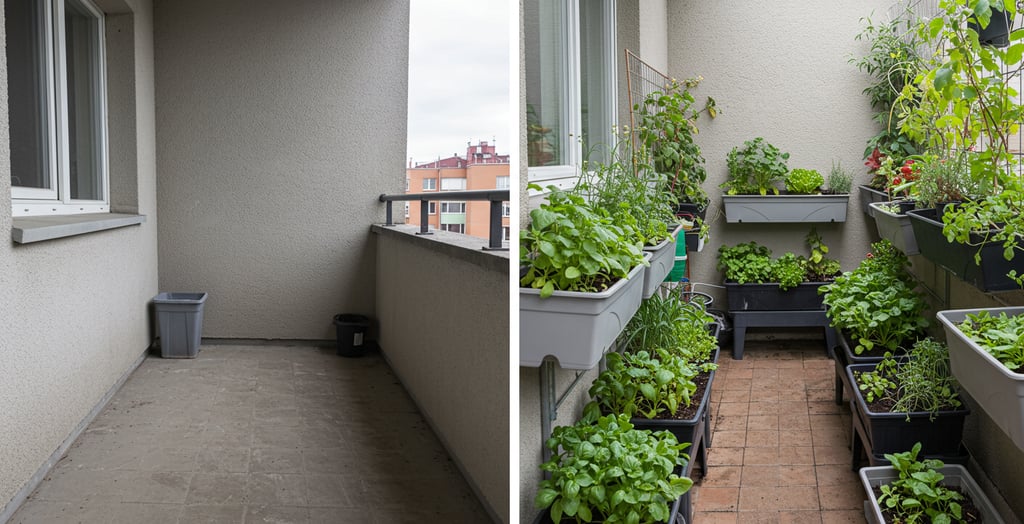

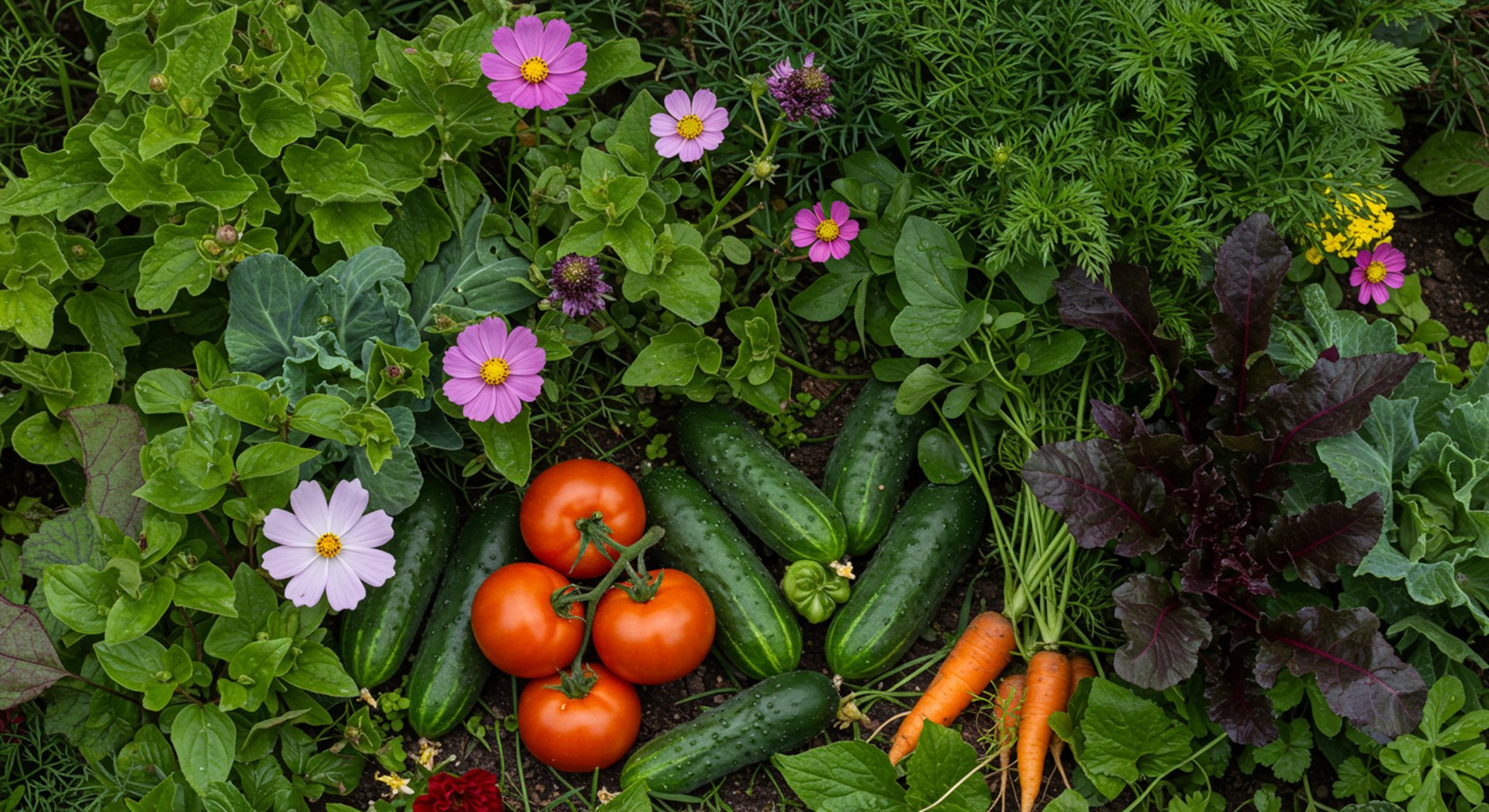
Join Our Growing Urban Plant Community
🌿 Grow Your Green Space—One Tip at a Time
Subscribe to the Balcony Bloomers newsletter and get:
🌱 Weekly balcony gardening tips for small spaces 🪴 Exclusive guides to growing herbs, veggies & flowers 🧪 Product reviews on planters, tools & eco-friendly gear 🎁 Free downloads, seasonal planting checklists & more
👉 Join 5,000+ city gardeners transforming their balconies into lush retreats. It’s FREE—and your plants will thank you.
Never Miss a Growing Tip
Join 5,000+ urban gardeners getting weekly insights on maximizing small spaces. Get the latest balcony garden ideas, tool recommendations that actually work, and seasonal growing tips delivered to your inbox every Tuesday.
BalconyBotanists@protonmail.com
(248) 716-3370
© 2025. All rights reserved.


